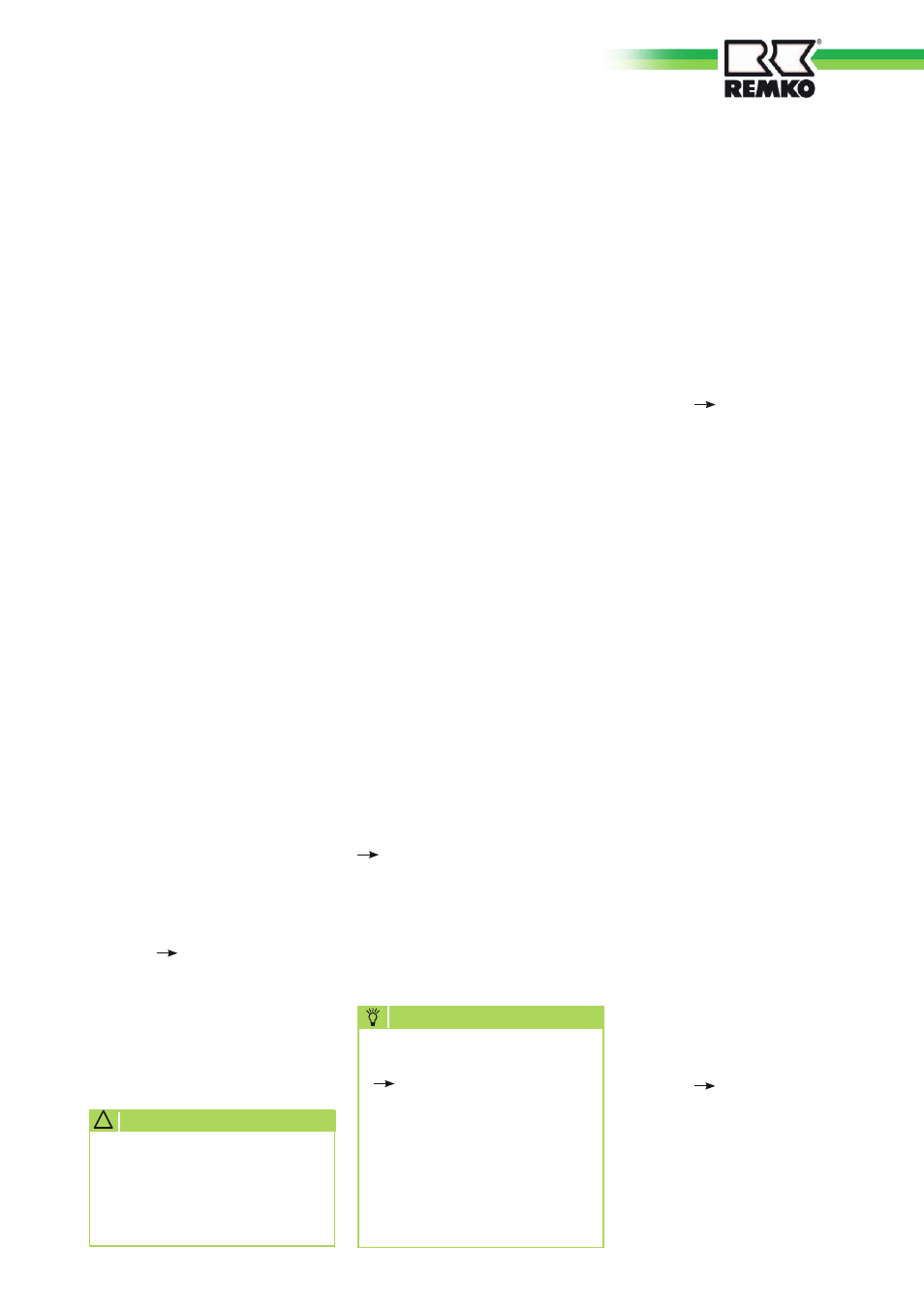REMKO Multi-talent User Manual
Page 7

Cooling
For the use of the cooling mode,
the heat pump manager must
be switched to "Cooling" mode
(release of cooling mode). In
addition, the basic parameters
of cooling mode must be set to
"ON" and at least one of the two
heating circuits must be switched
to active for the cooling. The
heat pump has a suitable cooling
reservoir for the heating/cooling
circuits through a cold water
storage tank. This must take place
with the hydraulic integration
through a cold water storage tank
(see hydraulic diagram).
Two-pipe system (combined
heating/cooling circuit)
As a basic rule, it is possible to use
the same circuit for both heating
and cooling. In this case a suitable
distribution system and a suitable
single room controller must be
present for cooling mode. One
example of this is fan convectors.
Cooling through floor heating or
another surface system is possible.
However, the cooling effect is
lower, because no dehumidification
of the room air can or may take
place. In these situations the
cooling return target temperature
must be set high enough that the
temperature cannot be expected
to fall below dew point (see
Specialist
Cooling mode T-RL
Cooling)
Room-temperature-controlled
release of cooling mode:
The room-temperature-controlled
release of the cooling is only
possible with a digital remote
control. Cooling mode is started
when the temperature falls below
the target room temperature
(see User
Heating circuit 1/2
T-room Cooling). If the current
room temperature falls more
than 2K below this set value, the
cooling function is stopped.
Combined release:
If weather-controlled and room-
temperature-controlled cooling are
activated, both release conditions
must be fulfilled to start the
cooling function.
Power level of the heat pump in
cooling mode:
If the temperature at sensor F17 is
not more than 2K warmer than the
cooling return target temperature,
the heat pump runs in cooling
mode at a set power of 50% (5
V-signal or power level 4). With
a greater cooling load the heat
pump switches to power level 7
(10 V signal or maximum power).
For this purpose, sensor F17 must
be at least 2K warmer than the
cooling return target temperature.
If this is reached at a later time, the
heat pump switches back to 50%
power and then switches off once
the sensor F17 has become more
than 2K colder than the cooling
return target temperature (see
Specialist
Cooling Mode T-RL
cooling).
If a hot water requirement arises,
the cooling is interrupted for the
duration of the hot water heating.
However, the cooling circuit
continues to operate through the
cooling water storage tank.
Four-pipe system (separate
heating and cooling circuits)
The heat pump has an output
for the connection of a cooling
circuit pump and an output for
the connection of a "cooling"
switching valve. In the process,
a separate cooling circuit can
be created. With the use of fan
convectors, therefore, only cooling
can take place in the summer.
Control algorithm
The control sensor for the cooling
is the return sensor F17.
A command/release of the cooling
can only take place from the
heating circuit which is activated
for the cooling. This can be both
weather-controlled and room-
temperature-controlled or can take
place with a combination of these
two types of regulation.
Weather-controlled release of
cooling mode:
Cooling mode is started when the
temperature falls below the target
outside temperature (see User
Heating circuit 1/2 T-external
Cooling). If the current outside
temperature falls more than 1K
below this target value, the cooling
function is stopped.
With the use of surface
cooling, the cooling return
target temperature must be set
above the dew point (approx.
15 °C).
!
ATTENTION
You achieve the best cooling
effect with fan convectors
see REMKO supplier
assortment KWD-S, WLT-S
and KWK. With these devices
the air in the room is cooled,
rotated and dehumidified. It
should be noted that the pipes
of the cooling circuit must have
water-vapour-tight insulation
because of the additional
dehumidifying performance!
NOTE
7
